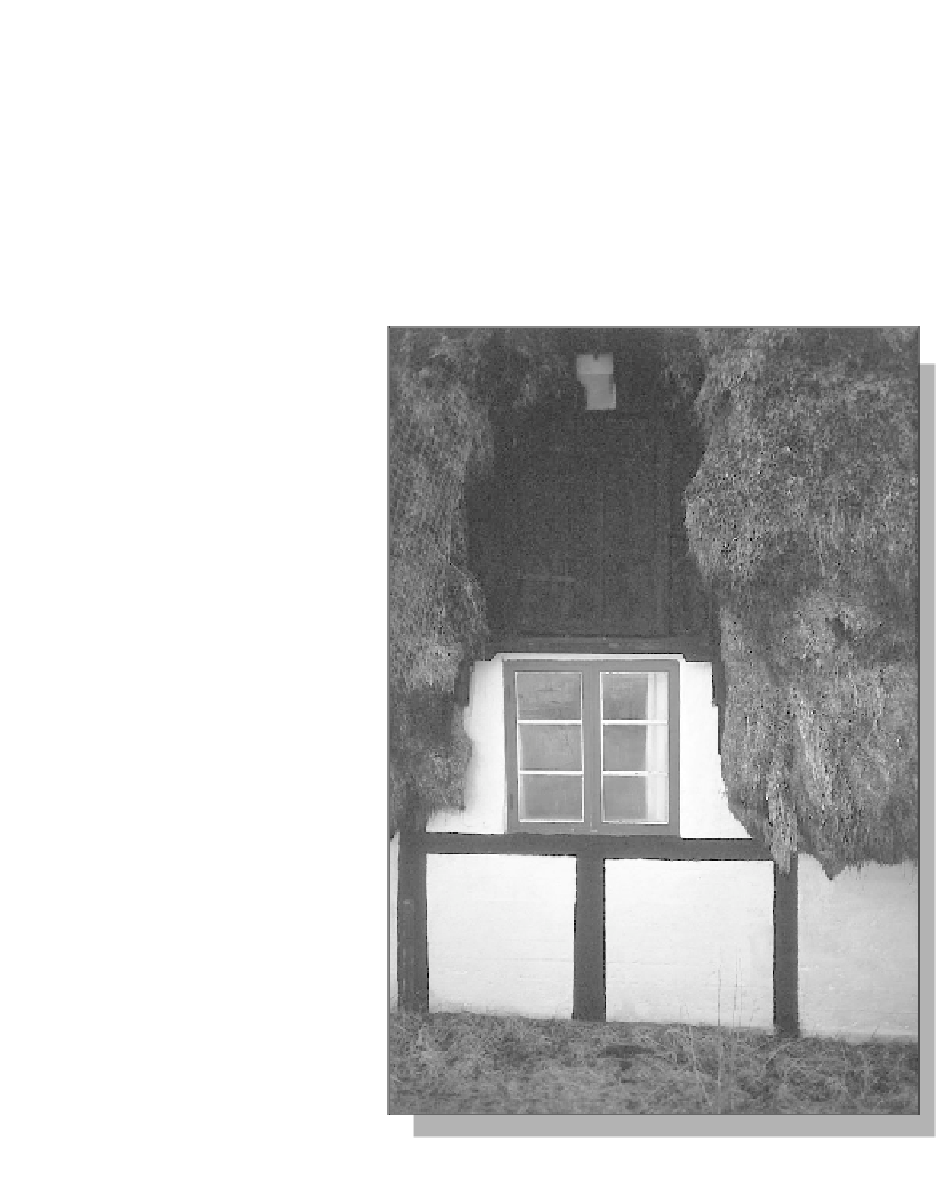Civil Engineering Reference
In-Depth Information
Eelgrass
Thatching
A layer of twigs (preferably pine or juniper) is placed on battens at 30 cm intervals. The
eelgrass is worked and shaken to get rid of any lumps and to make the straws lie in the
same direction. Sections of eelgrass are then wrung hard to form 3 m-long scallops, in the
same way one wrings water out of a floor cloth. The scallops continue out into a long, thin
neck which acts as a fastening loop to the battens. The scallops are fastened close into
each other on the four to five lower battens, and the rest of the roof is built up with loose
eelgrass laid in layers and pulled well together. By mounting a buffer along the roof's edge
similar to the turf mound on a turf roof,
it is possible to manage without scal-
lops. The roof needs to settle for a few
months before a second layer is
added. The total thickness is usually
60-80 cm, but there are examples of
3-m-thick roofs, which must be one of
history's warmest roofings. After the
final layer the thatching is cut level
with a special knife. The ridge is often
covered with a long strip of turf. This
could be replaced with a layer of eel-
grass kneaded in clay. After a few
years the roof will settle down and
become a solid mass with the consis-
tency of flaked tobacco. The time is
then ripe for a new layer. Rain only
gets through the outside layer and
then trickles slowly down to the edge
of the roof. At the same time the roof
is open to vapour coming from the
inside of the house.
Wall cladding
Eelgrass was often used for wall
cladding on gables, using 10 cm-thick
layers of combed-out seaweed of
about 60-70 cm in length. These bun-
dles were stuffed between vertical bat-
tens at 30 cm intervals. Every layer
was fixed by a horizontal branch
woven between the battens. Finally
the gable was cropped with a long
knife so that it had a smooth even sur-
face. Like eelgrass roofing, the eel-
grass gable has a very high durability,
but with time will settle, and cracks
must be refilled.
Figure 15.27: Thatching with eelgrass, Denmark.

